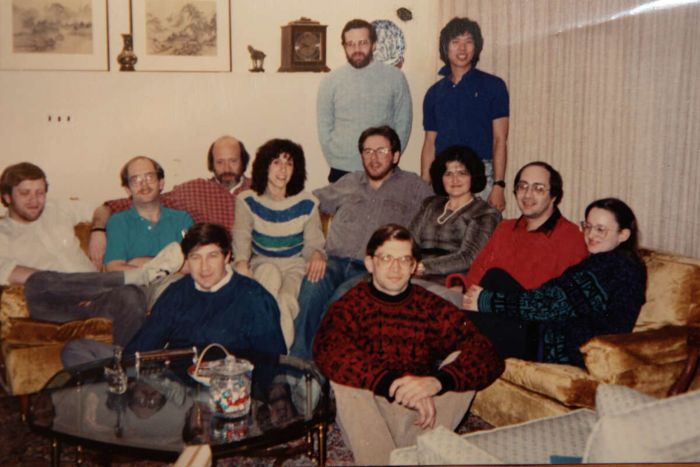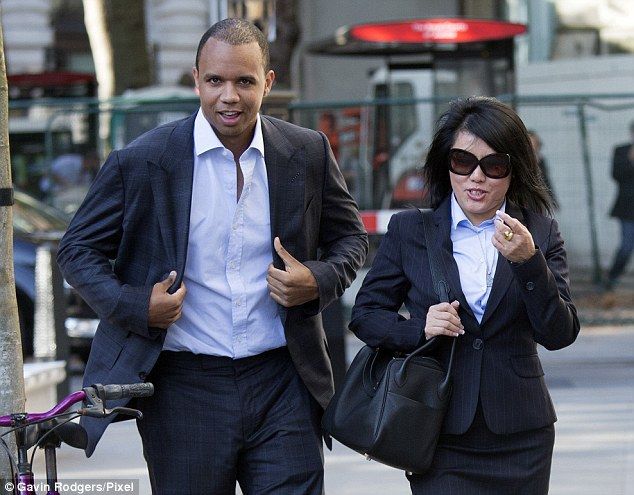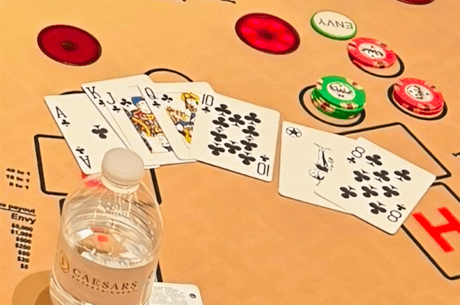The Top 5 Casino Cheating Scandals That Shook the Industry

Casinos are built on luck, chance, and razor-sharp security—but that hasn’t stopped some daring minds from trying to outsmart the system.
From high-tech hacks to brainy blackjack teams, here are five of the most jaw-dropping cheating scandals to ever hit the gambling world.
1. The MIT Blackjack Team
The MIT Blackjack Team, a group of students and alumni from the Massachusetts Institute of Technology (MIT), Harvard, and other prestigious institutions, gained notoriety in the late 20th century for their sophisticated card-counting techniques that allowed them to beat casinos at blackjack. Their story has been widely publicized, including in the book Bringing Down the House and the film 21.
What Was the Plan?
The MIT Blackjack Team didn’t just play cards—they hacked the game. Back in the late 1970s, a group of MIT students decided to apply their math skills to blackjack, turning card counting into an art form. It wasn’t just about counting cards; it was about playing the odds like a well-oiled machine. "Spotters" tracked the cards, and when the count was right, they’d signal the "big players" to drop big bets. It was like a secret code—maximizing profits while staying under the casino radar. Talk about a high-stakes math class!
Notable Members
- Bill Kaplan: A Harvard graduate who brought business acumen to the team, organizing their operations and ensuring disciplined execution of strategies.
- J.P. Massar: An original member whose passion for blackjack and card counting was instrumental in the team's formation and success.
- Jeff Ma: Known for his quick mathematical skills, Ma became a central figure in the team's operations and later served as an inspiration for the main character in 21.
- Mike Aponte: Recognized for his role as a "big player," Aponte was adept at placing significant bets during favorable counts, contributing substantially to the team's winnings.
- John Chang: Joining later, Chang became one of the team's most enduring members, continuing to play and manage teams well beyond the original group's disbandment.
Throughout the 1980s and 1990s, the MIT Blackjack Team reportedly amassed winnings in the millions of dollars. Their success drew the attention of casinos, leading to increased surveillance and countermeasures such as frequent shuffling and banning known team members. These actions eventually led to the team's dissolution.
Post-blackjack, many team members pursued successful careers in various fields. Bill Kaplan transitioned into business consulting, while Jeff Ma ventured into the tech industry. The team's exploits have left a lasting legacy, highlighting the intersection of mathematics, strategy, and real-world application.

2. The Roselli Brothers
Dressed like high-rollers, the Roselli brothers waltzed into Europe’s most elite casinos with nothing but charm, cool nerves—and a secret camera hidden inside a phone. Their roulette hustle wasn’t just slick—it was scientifically calculated, and for a time, almost unstoppable.
Formation and Strategy
In the early 2000s, the Roselli brothers took "high-tech" to a whole new level, turning roulette into a game of tech wizardry. Armed with a modified phone and a micro camera, they secretly filmed the spinning wheel. Meanwhile, an accomplice used software to predict where the ball would land, feeding the info to the brothers via earpiece. It was like Mission Impossible meets Vegas—except instead of stealing secrets, they were stealing wins.
Notable Members
- Giovanni & Francesco Roselli: The brains of the operation, they disguised their surveillance equipment and carried out the scam with smooth confidence.
- Unidentified Accomplice: Worked remotely to compute landing predictions in real time.
They hit casinos in London and across Europe, winning an estimated £1.3 million before the scam was detected. Security noticed the timing of their bets and uncovered the concealed camera.
The brothers were arrested, and the method exposed a new threat: predictive tech in gambling. It set off a wave of security upgrades across the industry.

3. Phil Ivey & Cheung Yin Sun
When poker legend Phil Ivey and his elusive partner Cheung Yin Sun stepped into elite baccarat rooms, they weren’t relying on luck. They were reading the cards—literally—using minuscule defects invisible to the average player. The line between strategy and cheating had never looked so thin.
What Was the Plan
In 2012, poker pro Phil Ivey teamed up with Cheung Yin Sun to turn a deck of cards into their personal cheat sheet. Using a technique called edge sorting, they spotted tiny imperfections on the backs of playing cards—basically, playing a game of "Where’s Wally" with the deck. By cleverly asking for specific card-dealing practices, they gave themselves a serious edge over the casino, turning their sharp eyes into a memory-based advantage. It’s like they found the cheat code to baccarat—and used it to rake in millions.
Notable Members
- Phil Ivey: Poker superstar known for his sharp instincts and calm demeanor.
- Cheung Yin Sun: Expert in edge sorting, responsible for reading card flaws.
They won £7.7 million at London’s Crockfords and $10 million at the Borgata Casino in Atlantic City. When casinos refused to pay or sued to reclaim losses, courts ruled Ivey violated gaming rules, even if he didn’t technically cheat.
Ivey’s reputation remained mostly intact among players, but casinos became stricter about card handling and shuffled more aggressively. The case set a global precedent on “legal” advantage play.

4. The Crown Casino Heist
The Crown Casino Heist stands as one of the most audacious and sophisticated casino robberies in modern history. Unlike the typical high-drama scenes of masked intruders, this heist was carried out with precision, relying on technology, inside knowledge, and expert strategy.
The masterminds behind the operation managed to exploit vulnerabilities in the system, walking away with millions while leaving the casino none the wiser. It’s a case that highlights not only the risks of high-stakes gaming but also the potential cracks in even the most secure establishments.
What Was the Plan?
In 2013, a shadowy high-roller cracked the code to Crown Melbourne’s slot machines—literally. With a little inside help from a surveillance employee, real-time footage of the machines was streamed to an external analyst who figured out how to hack the algorithm. The result? Precise signals that allowed the player to win whenever they wanted. It was like playing slots on easy mode—only the casino never saw it coming.
Notable Members
- Anonymous Player
- Anonymous Surveillance Operator
In a matter of days, $33 million AUD was siphoned off. The casino only discovered the deception after the player left. They chose to handle the issue quietly to avoid bad press.
The incident revealed serious security gaps in digital gambling infrastructure. Casinos upgraded software, restricted camera access, and improved machine auditing.

5. Dennis Nikrasch
Before face recognition and encryption, Las Vegas slot machines were vulnerable to someone who understood their insides better than their designers. Dennis Nikrasch, a former locksmith turned criminal genius, cracked the system—literally—and made millions without anyone noticing until it was too late.
What Was the Plan?
Starting in the 1970s, ex-locksmith Dennis Nikrasch cracked slot machines using custom tools to manipulate their internals. As technology advanced, he pivoted to reprogramming computer chips, forcing jackpots that seemed legitimate.
Notable Members
- Dennis Nikrasch: Mastermind with deep mechanical and technical expertise.
- Organized Crew: Assisted in distractions, security lookouts, and chip replacement.
Over 20 years, Nikrasch stole $15 million+ in jackpots from Las Vegas. After an FBI informant turned on him in 1998, he was arrested before executing another hit.
He served prison time and passed away in 2010. His methods inspired casino engineers to rethink machine security and transition to encrypted digital systems.

Who’s Laughing All the Way to the Bank?
Some people hit the jackpot; others hit the casino’s nerves. From MIT geeks counting cards to tech-savvy crooks hacking slot machines, these legendary scams made more than just money—they made waves. But which one takes the crown for fame, fortune, and sheer chaos?
My Take on the Biggest Casino Scandals
Okay, let’s be real—casino cheating isn’t just about breaking the rules, it’s about flipping the script. Take the MIT Blackjack Team, for example. These guys turned card counting into an art form and made millions, only to get banned from every casino. Honestly, I can’t help but admire their brains—using pure strategy to beat the system like that is next-level.
Then there’s the Roselli Brothers. They didn’t overthink it. They just rigged slot machines and dice like it was no big deal, and somehow got away with it. Simple, bold, and super effective. I mean, if you’re gonna cheat, might as well go big, right?
Phil Ivey and Cheung Yin Sun? These two didn’t even technically cheat—they just found a loophole in baccarat with edge sorting and walked away with millions. It’s honestly genius, and I kinda wish I thought of it first.
And the Crown Casino Heist? Classic inside job. The planning and precision behind it all still blows my mind. Finally, Dennis Nikrasch, who didn’t just hack slots—he straight-up reprogrammed them. That kind of tech-savvy scam was way ahead of its time.
At the end of the day, these legends didn’t just pull off a scam—they changed the game entirely. It’s a little shady, sure, but I can’t help but respect the hustle.
Now, let's buckle up as we rank the top 5 casino capers that turned the house edge into a house of cards.
Here's a comparison table ranking the top 5 stories by fame, money, and impact:
| Story | Fame (1-5) | Money (1-5) | Impact (1-5) |
|---|---|---|---|
| The MIT Blackjack Team | 5 | 4 | 5 |
| The Roselli Brothers | 3 | 3 | 4 |
| Phil Ivey & Cheung Yin Sun | 4 | 5 | 4 |
| The Crown Casino Heist | 2 | 5 | 3 |
| Dennis Nikrasch | 1 | 2 | 5 |
Explanation:
Fame:
- MIT Blackjack Team tops the list for fame. Their story became a cultural phenomenon, especially with the book and film adaptation.
- Phil Ivey & Cheung Yin Sun rank high due to the public attention around their legal grey area strategy and its impact on gambling.
- The Roselli Brothers and The Crown Casino Heist are less famous but still widely known among casino enthusiasts.
- Dennis Nikrasch has the lowest fame rank, mostly known to industry insiders.
Money:
- Phil Ivey & Cheung Yin Sun made the highest amounts: £7.7 million and $10 million.
- The Crown Casino Heist pulled off the largest single scam, $33 million AUD.
- The MIT Blackjack Team made millions, though spread out over time and across different team members.
- The Roselli Brothers took home around £1.3 million.
- Dennis Nikrasch made over $15 million, but his approach was more gradual and less high-profile.
Impact:
- The MIT Blackjack Team had the most lasting effect on the industry, leading to sweeping security changes in casinos.
- Dennis Nikrasch is ranked high for his impact on casino security, pushing advancements in machine encryption and monitoring.
- Phil Ivey & Cheung Yin Sun impacted casino practices with their edge sorting, though their case was more of a legal precedent.
- The Roselli Brothers introduced tech-based cheating, prompting security changes but with less long-term influence.
- The Crown Casino Heist highlighted vulnerabilities in digital gambling but did not have as lasting an effect as the others.
Crowning the Winner: The MIT Blackjack Team
When it comes to legendary casino scams, the MIT Blackjack Team reigns supreme. A group of bright minds from MIT and other top universities used nothing more than math, teamwork, and an unshakable sense of discipline to outsmart the house.
Their story quickly became a bestseller, Bringing Down the House, and was later adapted into the Hollywood hit 21, bringing them fame far beyond the casino world. Their millions were made through legal card counting, which shook the foundation of casino security and forced the industry to tighten its defenses.
Operating like a well-oiled spy operation, the team’s smooth, calculated style added an element of intrigue that kept casinos—and audiences—on edge. It’s the ultimate underdog story, one that captured the public’s imagination and proved that brains can win over brawn, even at the blackjack table.

Here we'll reveal the top banned strategies for casino games that are currently outlawed in Vegas casinos, and look at when players have been caught out trying to use these methods.
Learn MoreThe Games Behind the Greatest Casino Scams
Behind every great casino scam lies not just clever trickery, but an intimate understanding of the game itself. These weren’t random acts of luck or brute-force hacks—they were calculated moves that exposed the vulnerabilities in games long thought to be secure.
Take Blackjack, a game built on skill, probability, and decision-making. The MIT Blackjack Team didn’t cheat in the traditional sense—they mastered the system. By counting cards and coordinating roles within a team, they could track the ratio of high to low cards left in the deck and swoop in with large bets only when the odds favored them. Blackjack’s dependence on mathematical predictability made it possible—and profitable—to outplay the house legally, forcing casinos to revamp how they shuffle and monitor the game.
Roulette, often perceived as pure chance, turned out to be less random than most believed. The Roselli Brothers exploited the game’s physical mechanics by secretly recording the wheel’s spin with a hidden camera. Using software to analyze speed and deceleration, they narrowed down which zones the ball was most likely to land in. What looked like intuition at the table was actually a high-tech calculation, proving that even games of “luck” can be reverse-engineered with enough data.
In Baccarat, a game steeped in ritual and chance, Phil Ivey and Cheung Yin Sun introduced a subtle but powerful tactic called edge sorting. Unlike blackjack or roulette, baccarat doesn’t allow much player interaction—but the duo cleverly manipulated the card-dealing process to expose micro-defects on the backs of cards. By requesting specific dealing methods under the guise of superstition, they gradually built a mental map of high- and low-value cards, giving them an edge in a game where players usually rely on nothing but fortune.
Slot machines, the quintessential game of luck, proved vulnerable on multiple fronts. In the infamous Crown Casino Heist, a high-roller and his inside accomplice used surveillance footage to decode the slot algorithm, allowing them to play only when a win was likely. Meanwhile, Dennis Nikrasch, a former locksmith, bypassed the machines' mechanical and digital systems altogether. Over decades, he developed specialized tools and techniques to trigger jackpots at will—initially by tampering with physical mechanisms, later by reprogramming chips inside newer digital machines. These scams revealed how slot machines, while seemingly random, rely on underlying patterns and code that can be cracked with the right tools and knowledge.
What ties these stories together isn’t just the money stolen—it’s the way each scammer dissected their chosen game, found the flaw, and exploited it with precision. From cards to wheels to screens, each case changed how casinos approach game security, pushing the industry toward smarter surveillance, tougher regulations, and ever-evolving defenses. In the end, the games stayed the same—but how they’re played and protected was changed forever.









